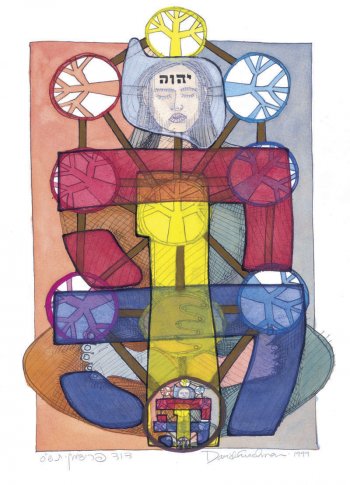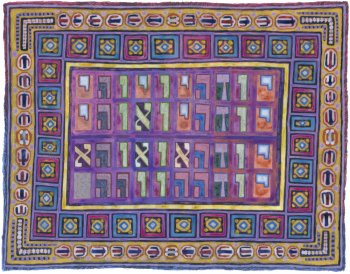The first Hebrew letter - א Aleph - represents the unification of opposites.
Its shape is comprised of an upper red part (actually a Hebrew letter י Yod); a lower blue part (an upside-down י Yod); balanced by a yellow diagonal part (a ו Vav which is a prefix that means ‘and’). It can also be seen as the numeral 1. The two are united into One by the Vav. The Gematria of the sum of the 3 letters that comprise this Aleph equals 26 (2 Yods are 20 plus the Vav which is 6).
In a sense, Aleph is a One-Letter Name of God, because the sum of the 4 letters of… more





